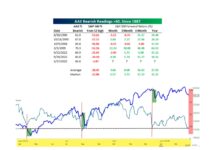Imagine approaching a friend that you think is very wealthy and asking her to borrow ten thousand dollars for just one night. To entice her, you offer as collateral the title to your 2019 Lexus parked in her driveway along with an interest rate that is 5% above that which she is earning in the bank.
Shockingly, your friend says she can’t. Given the risk-free nature of the transaction and excellent one-day profit, we can assume that our friend may not be as wealthy as we thought.
The September 16 Repo Market Fiasco
On Monday, September 16, 2019, a similar situation occurred in the overnight repurchase agreement (repo) funding market.
On that day, banks were unwilling or unable to lend on a collateralized basis, even with the promise of large risk-free profits via the repo market system.
This behavior reveals something very important about the banking system and points to the end of market stimulus that has been around for the past decade.
The Plumbing of the Banking System and Financial Markets
Interbank borrowing is the engine that allows the financial system to run smoothly. Banks routinely borrow and lend to each other on an overnight basis to ensure that all banks have ample funds to meet daily cash flow needs and that banks with excess funds can earn interest on them. Literally, years go by with no problems in the interbank markets and not a mention in the media.
Before proceeding, what follows is a definition of the funding instruments used in the interbank markets.
- Fed Funds are uncollateralized interbank loans that are almost exclusively done on an overnight basis. Except for a few exceptions, only banks can trade Fed Funds.
- Repo (repurchase agreements) are collateralized loans. These transactions occur between banks but often involve other non-bank financial institutions such as insurance companies. Repo can be negotiated on an overnight and longer-term basis. General collateral, or “GC,” is a term used to describe Treasury, agency, and mortgage collateral that backs certain repo loans. In a GC repo, the particular securities backing the loan are not determined until after the transaction is agreed upon by the counterparties. The securities delivered must meet certain pre-defined criteria.
On September 16 in the repo market, overnight GC repo traded as high as 8%, almost 6% higher than the Fed Funds rate, which theoretically should keep repo and other money market rates closely tied to it. The billion-dollar question is, “Why did a firm willing to pay a hefty premium, with risk-free collateral, struggle to borrow money”?
Before the 16, a premium of 25 to 50 basis points versus Fed Funds would have enticed a mob of financial institutions to lend money via the repo markets. On the 16th, many multiples of that premium were not enticing enough.
Most likely, there was an unexpected cash crunch that left banks and/or financial institutions underfunded. The media has talked up the corporate tax date and a large Treasury bond settlement date as potential reasons. We are not convinced by either excuse as they were easily forecastable weeks in advance.
Regardless of what caused the liquidity crunch, we do know, that in aggregate, banks did not have the capacity to lend money. Given the capacity, they would have done so in a New York minute and at much lower rates.
To highlight the enormity of the aberration, consider the following:
- Since 2006, the average daily difference between the overnight GC repo rate and the Fed Funds effective rate was .025%.
- Three standard deviations or 99.5% of the observances should have a spread of .56% or less.
- 8% is a bewildering 42 standard deviations from the average, or simply impossible assuming a traditional bell curve.
What was revealed about the repo market on September 16?
The U.S. and global banking systems revolve around fractional reserve banking. That means banks need only hold a fraction of the cash deposits that they hold in reserve accounts at the Fed. For example, if a bank has $1,000 in deposits (a liability to the bank), they may lend $900 of those funds and retain only 10% in reserves. This is meant to ensure they have enough funding on hand to make payments during the day and also as a buffer against unanticipated liquidity needs.
Before 2008, banks held only just as many reserves as were required by the Fed. Holding anything more than the required minimum was a drag on earnings, as excess reserves were unremunerated at the time.
Quantitative Easing (QE) and the need for the Fed to pay interest on newly formed excess reserves changed that. When the Fed conducted QE, they bought U.S. Treasury, agency, and mortgage-backed securities and credited the selling bank’s reserve account. The purpose of QE1 was to ensure that the banking system was sufficiently liquid and equipped to deal with the ramifications of the ongoing financial crisis. Round one of QE was logical given the growing list of bank/financial institution failures.
However, additional rounds of QE appear to have had a different motive and influence as banks were highly liquid after QE1 and had shored up their capital as well. That is a story for another day.
continue reading on the next page…







